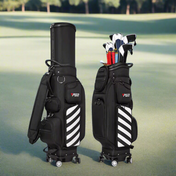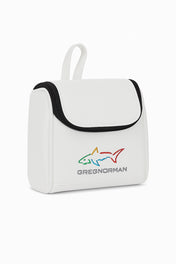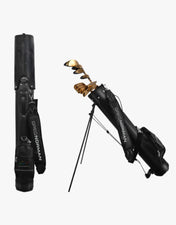Picking between a 2-piece and a 3-piece ball is not a cosmetic choice. It changes launch, spin, feel, and stopping power, which directly affects scoring on India’s fast greens and humid morning rounds. To find the best golf balls for real improvement, match construction to swing speed, control needs, and course conditions.
What “pieces” actually do?
A 2-piece ball pairs a large, energetic core with a durable cover to prioritise speed, straighter flight, and longevity. A 3-piece ball adds a mantle layer that manages spin separation, giving driver control while unlocking more greenside bite and softer feel. The right build brings out strengths without forcing a swing change.
Distance or spin: choose your edge
A 2-piece design typically gives higher launch with lower driver spin for carry and forgiving dispersion. A 3-piece design retains solid driver speed but shines on approach and wedge shots with more spin, better check on firm greens, and a quieter feel off the face. If fairway finding and value matter most, start with a 2-piece. If proximity and short-game control decide the round, lean 3-piece.
Player profiles that fit
-
2-piece: New or returning golfers who want distance, durability, and straighter flight while building consistency.
-
3-piece: Mid to low handicaps and confident ball-strikers who flight wedges, demand predictable check, and prefer softer, responsive feedback.
Feel that informs performance.
A firmer 2-piece can feel quicker off the driver and a touch clicky on putts and chips, which some players like for pace control. A softer 3-piece gives more grab on partial wedges and a muted roll off the putter, aiding touch on fast greens common at premium clubs in Delhi NCR and Bengaluru.
Covers and Indian conditions
Ionomer or Surlyn covers, common on 2-piece balls, are tough and cost-efficient for range-heavy schedules, cart paths, and monsoon months. Urethane covers, featured on many 3-piece models, deliver tour-like spin and touch that pay off on dewy mornings and tight, firm surrounds where one hop and stop saves strokes.
Compression and swing speed guidance
Slower to mid swing speeds often see immediate gains with lower-compression 2-piece designs that help launch and reduce excessive sidespin. Mid to faster swing speeds can exploit a 3-piece mantle to keep driver spin in check while maximizing approach and wedge spin where scoring happens.
India-specific course realities
Hot summers and baked fairways reward a 2-piece for extra roll and all-day durability. Damp mornings and breezy metro layouts reward a 3-piece for flight control and stopping power, especially on mid-iron approaches and delicate chips over tight lies.
How to test the best golf balls?
Start on the tee and track carry and dispersion. Then move to 50 to 100-yard wedge shots and watch for first-hop behaviour, spin, and landing consistency. Finish on the putting green and assess sound and rollout. If wedge shots skid and release too far, upgrade to a 3-piece. If putts feel too soft to judge pace, a firmer 2-piece can sharpen distance control.
Quick guidance
-
Building confidence and distance: Choose a modern 2-piece to boost carry, reduce curvature, and manage cost as volume of play rises.
-
Chasing lower scores through control: Choose a 3-piece to improve approach spin windows, greenside bite, and touch without sacrificing driver performance.
Buying tips that work
Lock one model for several rounds to stabilize feel and distance mapping across clubs. Keep a backup sleeve better suited to weather or course speed, such as a durable 2-piece for rainy days. When undecided, play a simple on-course A/B: three holes with a 2-piece, three with a 3-piece, noting proximity, rollout, and miss patterns.
Conclusion
The best golf balls elevate strengths and soften misses, not just add buzzwords. For straight flight, distance, and durability, a quality 2-piece is a smart choice that builds confidence fast. For approach control and short-game precision on India’s quick greens, a 3-piece construction can genuinely change scoring outcomes.
Choose intentionally, test in real conditions, and commit to the ball that fits swing speed, course setup, and scoring goals.




